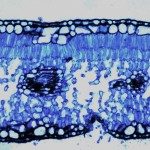Link to Pubmed [PMID] – 12876519
Presse Med 2003 Jun;32(22):1028-30
INTRODUCTION: Vibrio vulnificus proliferates during the summer in salt water where it infects the crustaceans. Expression of its pathogenicity depends on the underlying condition and mode of contamination.
OBSERVATION: A 65 year-old man presented with a Vibrio vulnificus septicaemia of cutaneous origin, transmitted when he cut himself with a crawfish. The severity of the infection was enhanced by severe immuno-depression and haemochromatosis. The infection regressed with appropriate antibiotherapy.
COMMENTS: Severe V. vulnificus infections are rare. Depending on the underlying condition and mode of contamination, one can distinguish between benign gastro-enteritis, local occasionally devastating infections and usually fatal septicaemia.
CONCLUSION: Even the most severe forms of V. vulnificus infections may be cured with early and well adapted anti-infectious treatment.


